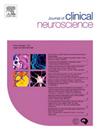Clinical and psychological factors associated with fear of relapse in people with multiple sclerosis: A cross-sectional study
IF 1.9
4区 医学
Q3 CLINICAL NEUROLOGY
引用次数: 0
Abstract
Background
Fear of relapse (FoR) is one of the main psychological concerns in people with relapsing-remitting multiple sclerosis (PwRRMS). It has disastrous consequences on treatment adherence, quality of life (QoL), and clinical course. Although the issue is closely linked to psychosocial aspects, it is not widely explored despite its overall impact on managing the condition. The determinants of FoR are vital for the optimization of therapeutic intervention toward ensuring patient welfare.
Methods
This cross-sectional study, carried out in Isfahan, Iran, from December 2023 to September 2024, investigated demographic, clinical, and psychological characteristics in PwRRMS. The level of FoR was measured by the Fear of Relapse Scale, and for anxiety, depression, and obsessive–compulsive symptoms, the Beck Anxiety Inventory (BAI), Beck Depression Inventory-II (BDI-II), and the Yale-Brown Obsessive-Compulsive Scale (Y-BOCS) were used, respectively. Correlation between these factors were analyzed using linear regression.
Results
A total of 189 PwRRMS were included. Multivariable linear regression analysis identified significant correlation between the higher annualized relapse rate (ARR) (B = 10.18, standardized 0.14, p-value < 0.05), anxiety (B = 0.32, standardized β = 0.19, p-value < 0.05), depression (B = 0.63, standardized β = 0.42, p-value < 0.001) and Expanded Disability Status Scale (EDSS) (B = 2.19, standardized β = 0.11, p-value < 0.05) with the FoR among PwRRMS. On the other hand, other demographic, clinical, and psychological variables, including disease duration, disability, and obsessive behavior, were found to lack a significant correlation with FoR (p-value < 0.05).
Conclusion
This study points out that ARR, anxiety, and depression are among the leading independent risk factors of FoR in PwRRMS. Given the great potential for attenuation with focused treatments and psychological consultation, becoming major contributors to the decrease of FoR and, importantly, to improved overall patient well-being, their proper management and clinical follow-up should be considered an important issue in dealing with such patients.
求助全文
约1分钟内获得全文
求助全文
来源期刊

Journal of Clinical Neuroscience
医学-临床神经学
CiteScore
4.50
自引率
0.00%
发文量
402
审稿时长
40 days
期刊介绍:
This International journal, Journal of Clinical Neuroscience, publishes articles on clinical neurosurgery and neurology and the related neurosciences such as neuro-pathology, neuro-radiology, neuro-ophthalmology and neuro-physiology.
The journal has a broad International perspective, and emphasises the advances occurring in Asia, the Pacific Rim region, Europe and North America. The Journal acts as a focus for publication of major clinical and laboratory research, as well as publishing solicited manuscripts on specific subjects from experts, case reports and other information of interest to clinicians working in the clinical neurosciences.
 求助内容:
求助内容: 应助结果提醒方式:
应助结果提醒方式:


